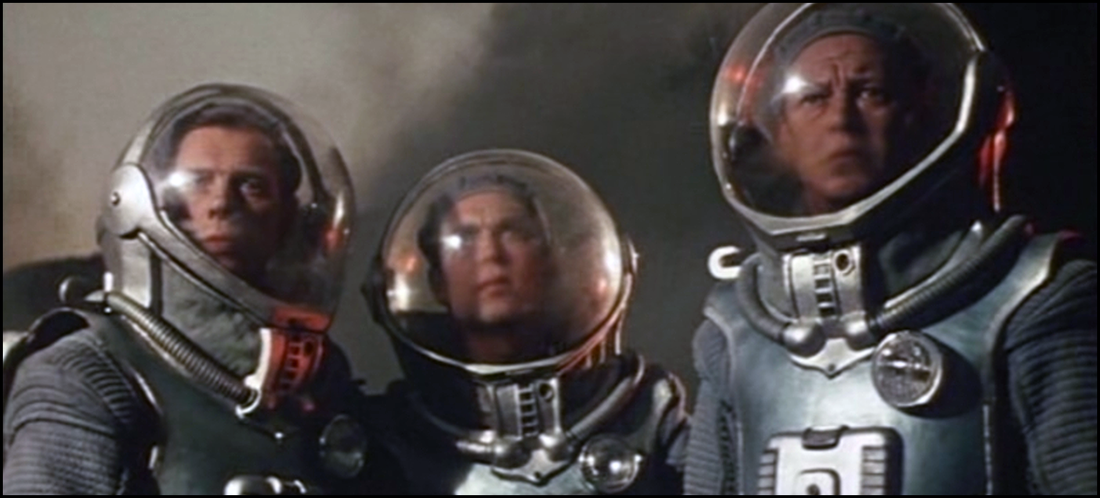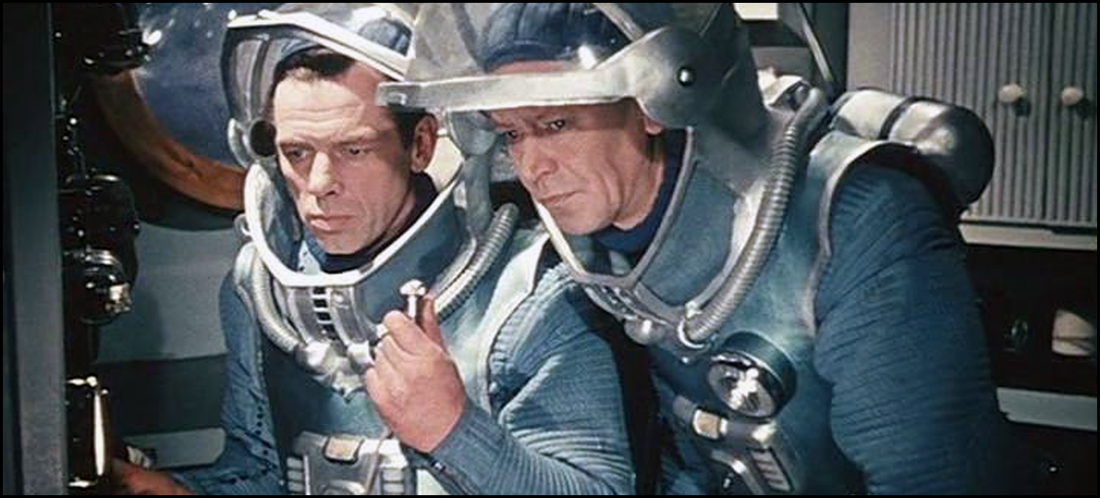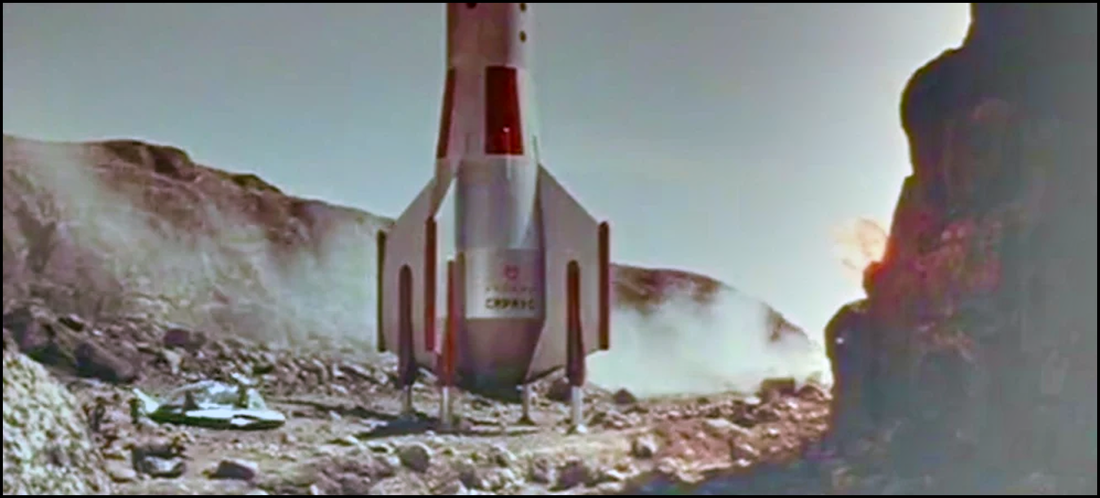Wikipedia.org reports that Corman was in need to some footage to craft a few theatrical epics of his own, so he purchased the rights to re-use scenes and sequences from a handful of Soviet releases: Nebo zovyot (1959), Planeta bur (1962), and Mechte navstrechu (1963). Nebo zovyot is the story of two countries competing against one another to land on Mars; Planeta bur spins the yarn of cosmonauts encountering hungry creatures on Venus; and Mechte navstrechu involves Earth space forces coming to the aid of a rocket forced to land on the Red Planet. The features – in their original Russian formats – do have varying reputations, but an examination of their respective ratings shows them all leaning heavily into the middle ground when it comes to their quality. I suspect Corman – with his learned eye – saw them perfectly ripe for the picking.
IMDB.com states that the bulk of the footage used to assemble Voyage’s story evolves directly from Planeta bur. However, new scenes were planned out and shot with American actors in order to give the Corman product its own narrative though heavily borrowing on the original’s aesthetics. Here’s the plot summary as provided by the website:
“In 2020, after the colonization of the moon, the spaceships Vega, Sirius and Capella are launched from Lunar Station 7. They are to explore Venus under the command of Professor Hartman, but an asteroid collides and explodes Capella.”
Voyage’s original sequences were scripted and directed by Curtis Hannigan. For his film, he cast such recognizable faces as Oscar-winner Basil Rathbone (The Adventures Of Robin Hood, The Magic Sword) and Faith Domergue (This Island Earth, It Came From Beneath The Sea).
Still, both IMDB.com and Wikipedia.org indicate that Voyage never quite completed the voyage to the silver screen as the resulting product bypasses theaters and was – ahem – ceremoniously dumped into the television market. Ouch.
-- EZ







 RSS Feed
RSS Feed